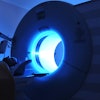Clinical decision support boosts the diagnostic yield of pulmonary embolism (PE) on CT pulmonary angiogram (CTPA) exams, researchers have reported.
The findings suggest that clinical decision support could be beneficial for reducing unnecessary imaging in this clinical situation, wrote a team led by Amita Sharma, MBBS, of Massachusetts General Hospital in Boston. The results were published December 9 in the Journal of the American College of Radiology.
"Point-of-order CDS tools to reduce unnecessary CTPA in hospitalized patients resulted in significantly higher PE yield when CDS recommendations were followed," they noted.
CTPA is the go-to exam for suspected PE, and its use has almost doubled in the past 20 years, the team explained. But its positive yield can be as low as 3.8% -- which is bad news for patients.
"Increased CTPA utilization and lower yields result in inappropriate use of high-cost imaging resources, greater patient wait times, and unwarranted exposure of patients to the potentially harmful effects of iodinated contrast and ionizing radiation," the researchers wrote.
That's where CDS can help. Incorporating scoring systems such as PERC (PE Rule out Criteria), and the Geneva and Wells rules into CDS tools has been shown to reduce unnecessary CTPA exams in the emergency department and in outpatient settings. But whether this holds true for hospitalized patients has been unclear.
To investigate whether CDS would improve the appropriate use of CTPA in hospitalized patients, Sharma and colleagues used a CDS tool based on the Wells Criteria (i.e., "the intervention") for a study that included 5,372 CTPAs from individuals who underwent the exam 12 months before (2,943) and 12 months after (2,429 exams) CDS was implemented. The investigators compared PE diagnosis yield from the exams in patients with providers who overrode CDS alerts and in those with providers who followed them; they also compared the use of CTPA before and after the intervention.
The group found the following:
- Post-intervention, CTPA yield was higher when CDS recommendations were followed (18.3%) compared with when they were disregarded (14.2%) – a 29.1% relative increase in PE yield, the group noted.
- The team did not find a difference in pulmonary embolism diagnosis yield before or after implementation of the CDS.
- It did find, however, a 7.4% decrease in CTPA use post-intervention compared to pre-intervention in 340,146 admissions over the study period.
CDS for this application works, according to the researchers.
"[Point]-of-order CDS to reduce unnecessary CTPA in hospitalized patients resulted in a significant decrease in CTPA utilization post-CDS implementation," they concluded.
The complete study can be found here.



















